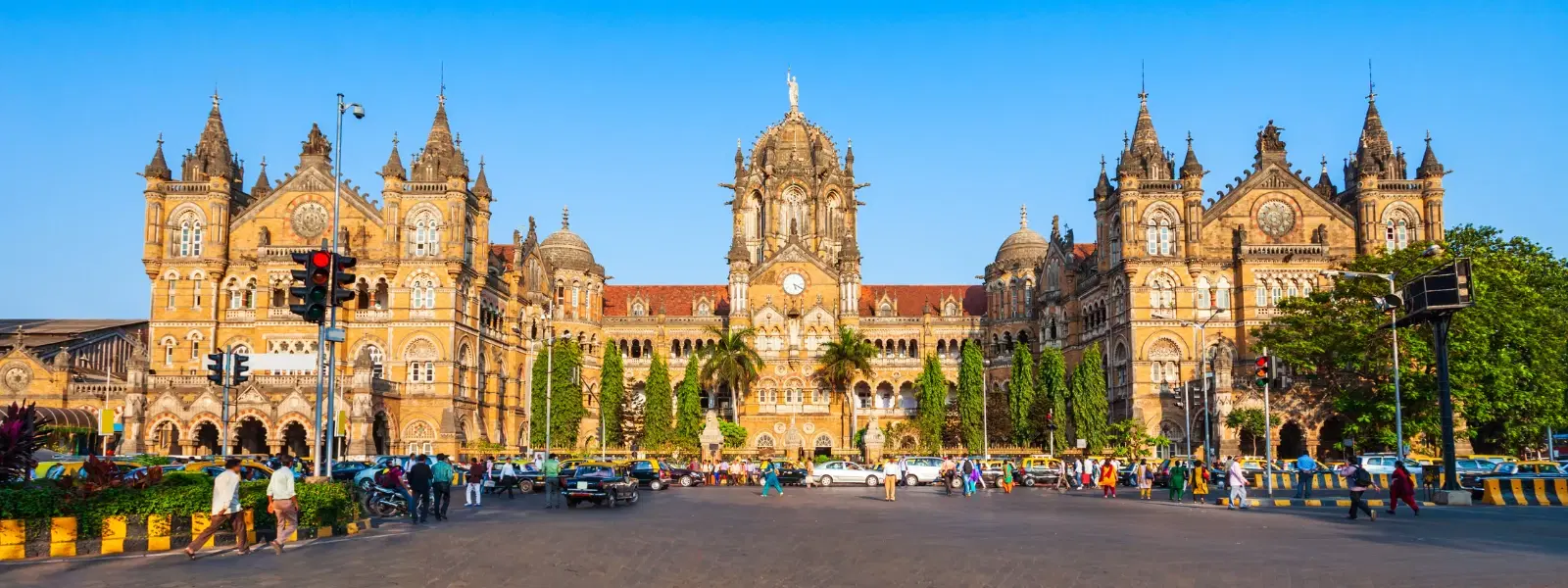
Flights
•04 min read

Imagine stepping back in time as the warm hues of the setting sun illuminate majestic station facades, each whispering tales of India’s storied past. For many, train journeys in India are not merely about reaching a destination—they are transformative experiences steeped in heritage, where every platform and arch tells a unique story. Today, we embark on a journey through 10 nostalgic train stations in India that reveal the historical, architectural, and cultural legacy of this vibrant nation.
The roots of Indian railways date back to the mid-19th century. The first railway station in India opened its doors during a time when colonial influence intertwined with local artistry, creating station designs that combined functional design with elegant craftsmanship. These vintage train stations have evolved into treasured symbols of India’s heritage, capturing the essence of a bygone era while still serving millions today.
Nostalgic train stations are more than relics—they offer intimate glimpses into India’s rich history and convey the cultural narrative of a nation on the move. Preserving these iconic structures not only maintains architectural diversity but also helps celebrate the legacy of traditional railway architecture in India. These hubs serve as landmarks that both locals and travelers cherish for their timeless charm.
This magnificent station is celebrated for its Victorian Gothic architecture, a marvel that stands as a UNESCO World Heritage site. With its intricate carvings and imposing facade, it remains a testament to the colonial era and continues to inspire awe among visitors.
One of the oldest and busiest railway stations in India, Howrah Junction is renowned for its dynamic energy and iconic design. Serving as a pivotal gateway to eastern India, the station buzzes with stories of generations of travelers, each adding a layer to its historic journey.
Stepping into Royapuram feels like entering a time capsule. Recognized as the oldest surviving railway station in India, its vintage charm and historical importance are woven into every brick and beam, making it a focal point for enthusiasts of old Indian railway history.
Located close to the majestic Taj Mahal, Agra Fort Railway Station exudes the regal air of Mughal-inspired architecture. Its design reflects the colonial era's reverence for grandeur and history, welcoming passengers who are eager to explore a heritage steeped in stories of royalty.
This station carries the spirit of India’s freedom struggle. With its colonial design intermingled with resilient local influences, it honors the bravery of those who fought for freedom, making it both a functional transit point and a living monument of history.

Blending Mughal-style elements with traditional design, Old Delhi Railway Station is crucial in connecting the bustling capital with its historical roots. Its architecture and location serve as daily reminders of the rich past that continues to influence modern India.
A striking example of Indo-Saracenic architecture, Vizianagaram Railway Station stands out for its unique style and historical significance. It captures a sense of grandeur and showcases the merging of diverse cultural influences.
Set in the scenic hills along the Kalka-Shimla Railway—a UNESCO World Heritage site—Barog Railway Station offers not only historical intrigue but also picturesque views that enhance the classic train journey experience in India.
This station charms visitors with its blend of Mughal and Rajput architectural influences. Recognized as a heritage railway station, it evokes the royal elegance of the past while catering to the needs of modern travelers.
An essential central hub, Nagpur Junction is celebrated for its extensive colonial-era design and historical importance in the railway network. Its strategic location and timeless architecture make it a vital piece of India’s railway heritage.
The architectural styles seen in these stations—ranging from Victorian Gothic to Indo-Saracenic and Mughal influences—reflect the eras in which they were built. Each station tells a tale through ornate arches, intricate carvings, and expansive facades that echo the refined artistry of the past.
While numerous initiatives have taken root to preserve these historic railway stations, challenges such as rapid modernization and urban expansion persist. Balancing aesthetic preservation with functional upgrades continues to be a nuanced task for conservationists across India.

Classic journeys like the Darjeeling Himalayan Railway or the opulent Palace on Wheels further enrich the sense of railway nostalgia. These celebrated train journeys align perfectly with the vintage allure of heritage railway stations, offering travelers an immersive experience into the past.
Indian literature, cinema, and art frequently invoke the mystique of historic railway stations. These trains and stations have been immortalized as cultural symbols that inspire filmmakers, storytellers, and artists, further underscoring railway nostalgia in everyday Indian life.
Royapuram Railway Station in Chennai, established in 1856, holds the distinction of being the oldest surviving railway station in India. It was the starting point of the first train journey in South India, marking a significant milestone in Indian railway history.
Chhatrapati Shivaji Maharaj Terminus in Mumbai is widely regarded as the most iconic railway station in India due to its Victorian Gothic architecture and UNESCO World Heritage status.
One of the funniest railway station names in India is "Ib," located in Odisha. It is known for being one of the shortest station names in the world.
The first railway station in India is Royapuram Railway Station in Chennai, established in 1856.
Some notable heritage railway stations in India include Howrah Junction, Old Delhi Railway Station, and Lucknow Charbagh Railway Station.
Nostalgic train stations are important because they preserve the architectural, cultural, and historical legacy of India's railway system, offering a glimpse into the past.
Nostalgic train stations in India are not just transit points but living relics of the country’s rich history and architectural heritage. They connect modern journeys with the past, encouraging all travelers—from the wanderer seeking spontaneous adventures to the planner looking for a mix of heritage and convenience—to immerse themselves in the charm of Indian railway nostalgia.